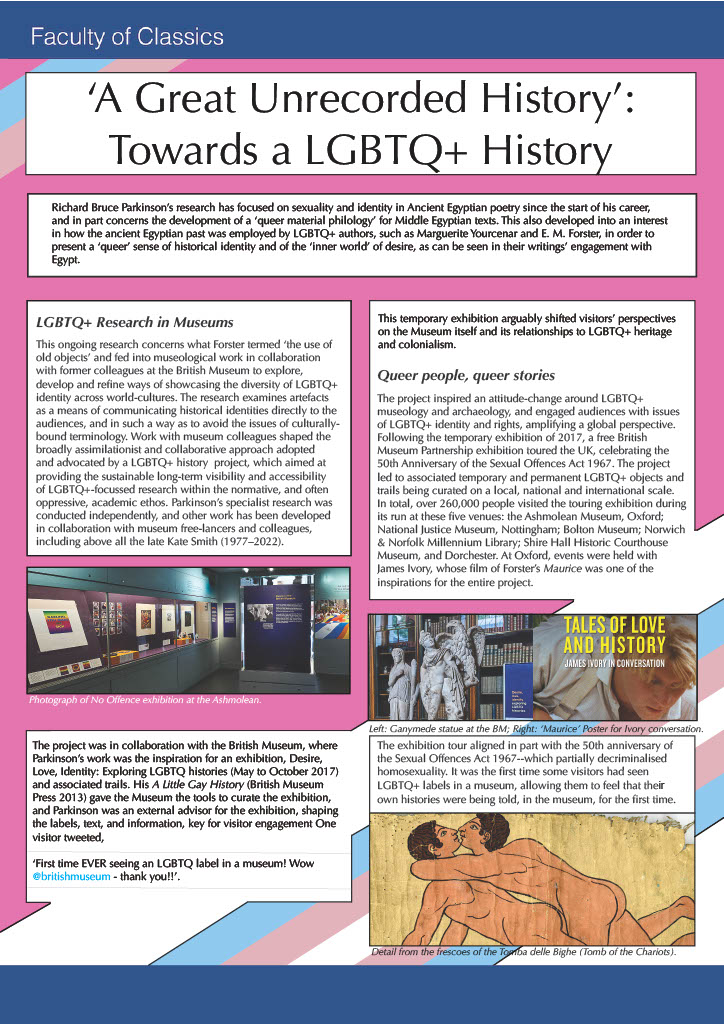‘A Great Unrecorded History’: Towards a LGBTQ+ History

[Below text from poster]
Richard Bruce Parkinson’s research has focused on sexuality and identity in Ancient Egyptian poetry since the start of his career, and in part concerns the development of a ‘queer material philology’ for Middle Egyptian texts. This also developed into an interest in how the ancient Egyptian past was employed by LGBTQ+ authors, such as Marguerite Yourcenar and E. M. Forster, in order to present a ‘queer’ sense of historical identity and of the ‘inner world’ of desire, as can be seen in their writings’ engagement with Egypt.
LGBTQ+ Research in Museums
This ongoing research concerns what Forster termed ‘the use of old objects’ and fed into museological work in collaboration with former colleagues at the British Museum to explore, develop and refine ways of showcasing the diversity of LGBTQ+ identity across world-cultures. The research examines artefacts as a means of communicating historical identities directly to the audiences, and in such a way as to avoid the issues of culturallybound terminology. Work with museum colleagues shaped the broadly assimilationist and collaborative approach adopted and advocated by a LGBTQ+ history project, which aimed at providing the sustainable long-term visibility and accessibility of LGBTQ+-focussed research within the normative, and often oppressive, academic ethos. Parkinson’s specialist research was conducted independently, and other work has been developed in collaboration with museum free-lancers and colleagues, including above all the late Kate Smith (1977–2022).
This temporary exhibition arguably shifted visitors’ perspectives on the Museum itself and its relationships to LGBTQ+ heritage and colonialism.
Queer people, queer stories
The exhibition tour aligned in part with the 50th anniversary of the Sexual Offences Act 1967--which partially decriminalised homosexuality. It was the first time some visitors had seen LGBTQ+ labels in a museum, allowing them to feel that their own histories were being told, in the museum, for the first time.



